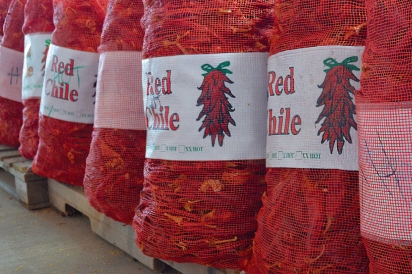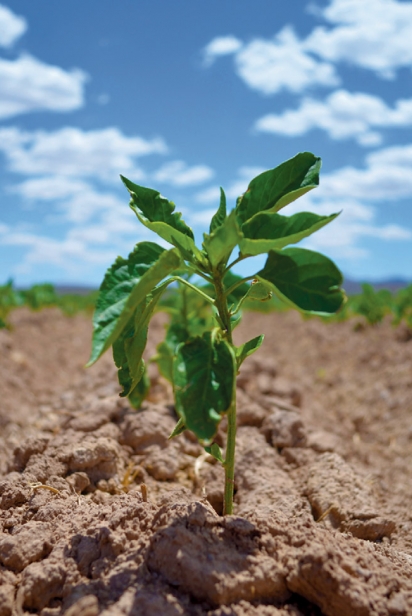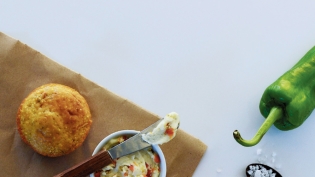A Roadtrip to New Mexico--In Search of Chile-Pepper Heaven
New Mexico road trip leads to chile-pepper heaven
I’m leaving Houston.
I’m leaving the traffic, the humidity, the sprawling city. I’m heading to New Mexico. I’m in search of heat.
Not Houston heat, but that tingle on the tip of your tongue that taunts the taste buds, causing cheeks to flush and temples to perspire. The bittersweet burn that you quickly regret, but keep coming back for more. I’m in search of chiles. Not your average, garden-variety pepper but the member of the Capsicum genus whose cult-like following is the basis of lore, the foundation of festivals and the ultimate trigger for my pilgrimage. I want Hatch chiles.
The road trip across Texas is endless. Leaving the crowded eight-lane highways and emerging into the wide open stretches of western Texas can be numbing, but it’s crucial in my pursuit. The wind farms spinning in sync are mesmerizing, as are the pumpjacks, continually pumping, fueling our economy. In between these quasi-entertaining spectacles, the land is flat and unforgiving. There are periodic signs indicating the last stop for miles, igniting fear that I’ve made a poor decision, but I press onward.
I’ve chosen a southern route—the most direct to Hatch, the birthplace of my burning obsession. Rolling into the town, it seems I’ll have no difficulty satisfying my appetite.
“The Best Green Chile Cheeseburger,” chiles on eggs, chiles on tacos, chiles on toast, chiles, chiles, chiles—any way you want your chiles, you can get your fix in Hatch.
Hatch (the name) isn’t a specific pepper, rather it refers to peppers grown in the Hatch Valley—an ideal landscape to cultivate these tasty and fiery ingredients.
Chiles are deeply rooted in New Mexican culture. According to the books, Captain General Juan de Onate, the founder of Santa Fe, brought the famed chiles from Mexico to what later became part of the United States in 1609. However, some say an expedition in 1582 delivered seed pods to the natives for cultivation. The rest is history.
I pull into the gravel lot behind one of the starkly decorated yet crowded restaurants and park the car. My mouth is already watering. Upon opening the door, I can feel the pepper tickling the back of my throat. The joint is seat-yourself and I quickly find a table off to the side so locals don’t see a Texan tearing up from the heat and emotional fulfillment. The server strolls over and slowly fires, “Are you ready to order?”
Of course I am. “I’ll have the chile enchiladas, and a Mexican Coke,” I say proudly.
“Red or green?”
Not sure if she’s referring to my enchiladas or the beverage, I counter, “Excuse me, red or green what?”
“Chiles. You’re not from here, are you?” She chuckles. “Today the green chiles are hotter. Or I can have them make it Christmas.”
Lady, you’re blowing mind. “I take it Christmas is red and green … ?”
“You must be a genius,” she retorts drily.
“Christmas it is. Thanks.”
When my dish arrives the smoky aroma hits my nostrils and the gutter of my jaw grows acidic while the saliva begins to pool. I take my first bite of Hatch chile-fied cuisine in Hatch and like a youngster on Christmas morn, I light up. My lips burn. And my eyes well up. The icy Coke’s effect on my fiery breath is fleeting. Luckily, the sting eventually subsides, creating space for another bout with the almighty Hatch.
A local leans over to tell me to get an order of sopapillas, which I thought were intended for dessert, but my new friend quickly informs me that the golden brown, air-filled, deep-fried pastries drizzled with honey are an effective neutralizer for the residual heat.
Hatch is a small town thriving from its agricultural scene. A well-attended eponymous festival in early September attracts serious chile lovers. In between munching on everything chile, you can stop by the various shops devoted to the nightshade. I’m not looking for chile tchotchkes, I’m interested in seeing them in all their glory: in the fields. Thankfully, it’s not difficult to find the tidy rows of lush green incubating the next generation of heat. There are more than 40,000 acres dedicated to growing the peppers.
Driving north toward Albuquerque, my surroundings change as I climb in altitude. The landscape is barren and ethereal. A New Mexican would say “enchanting,” especially when the clouds cast shadows on the distant mountains. I’m en route to the largest city in the state to see how they handle their prized produce.
Friends referred me to Mary & Tito’s, a little hole in the wall and a recipient of a James Beard Award, whose newsletter praises their carne adovada¬–stuffed sopapillas, a slow-roasted pork delight in red chile sauce. Boy, it does not disappoint. There’s a reason why this dish is one of New Mexico’s most celebrated. The meat is incredibly tender and the sopapilla nicely balances the spice.
Still farther north is Santa Fe. The hills are dramatic and the expanse of blue sky is breathtaking. Santa Fe is New Mexico’s capital, a small one at that. They host their own Wine & Chile festival to mark the harvest of Hatch chiles, when every self-respecting New Mexican buys fire-roasted chiles from a farmers market or a roadside vendor. Most of the time, when you buy directly from the vendor, you buy what’s in the barrel— which is a minimum of 40 pounds (and goes for around $30). Getting the chiles home is the easy part. They then must be peeled, seeded, frozen, canned and/or preserved so that New Mexicans can enjoy their chiles year-round.
I begin the trek home with my voracious appetite satiated and lips still ablaze.









